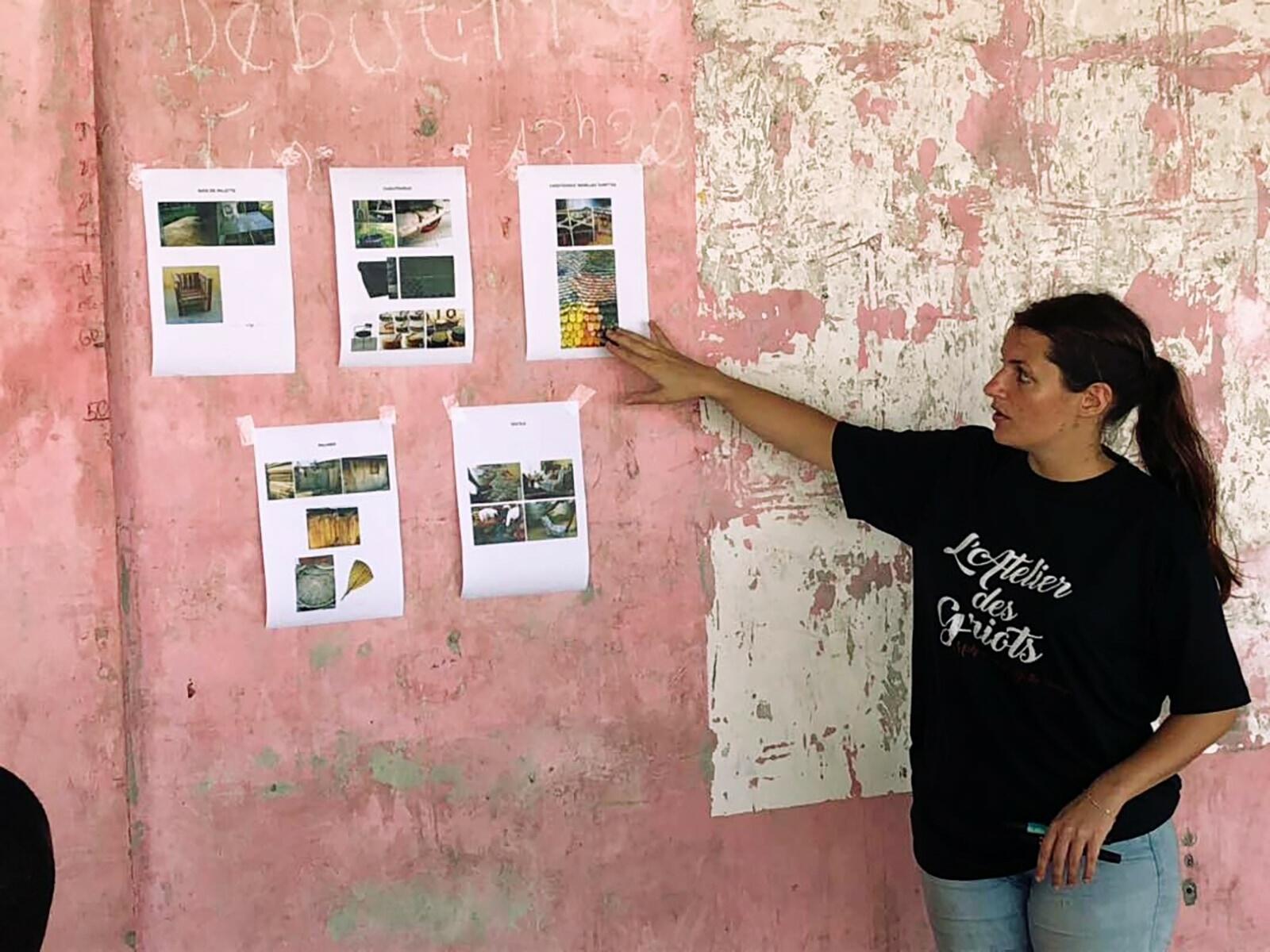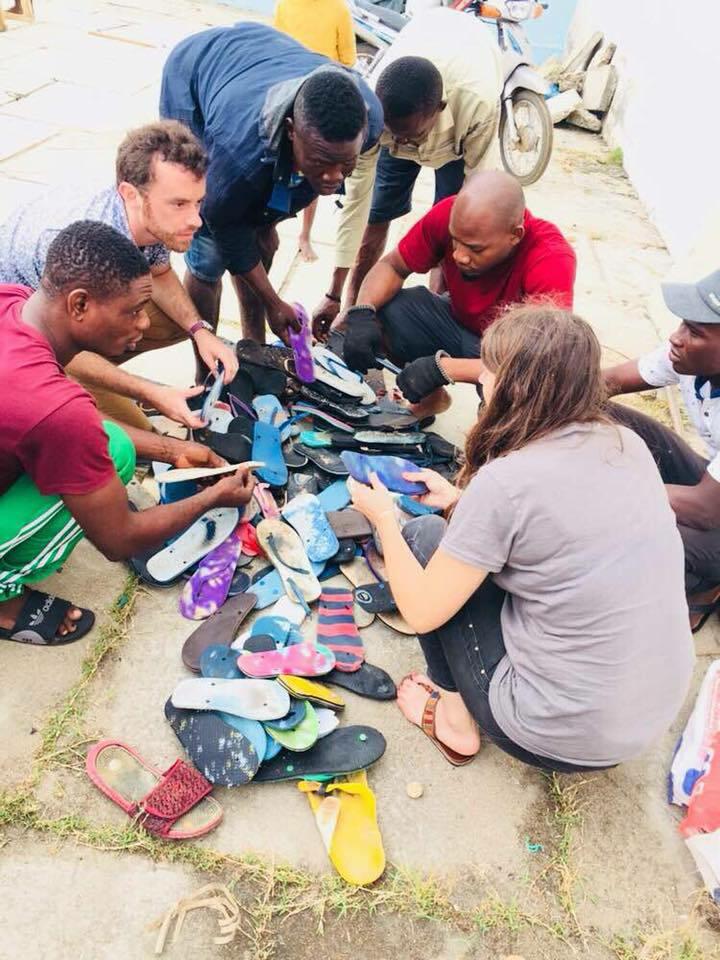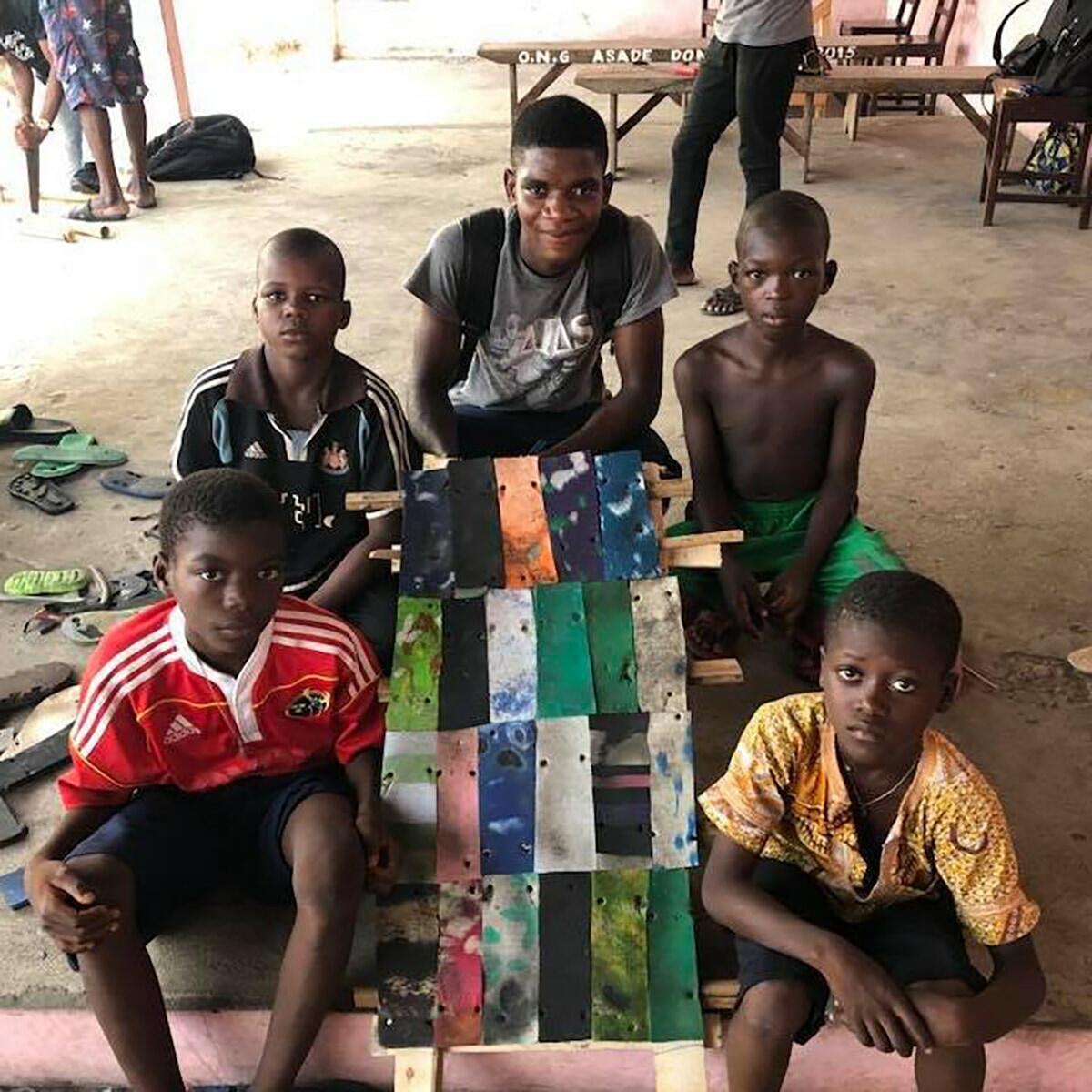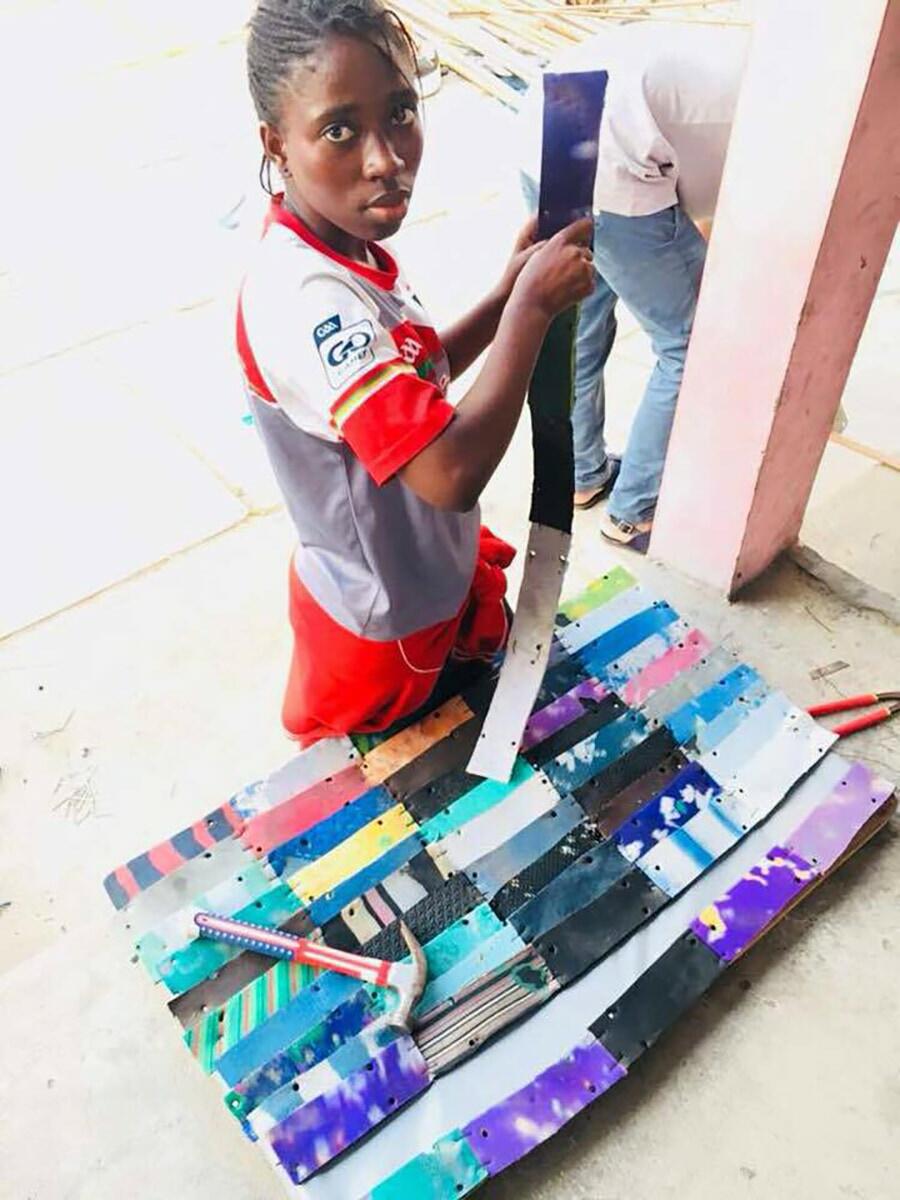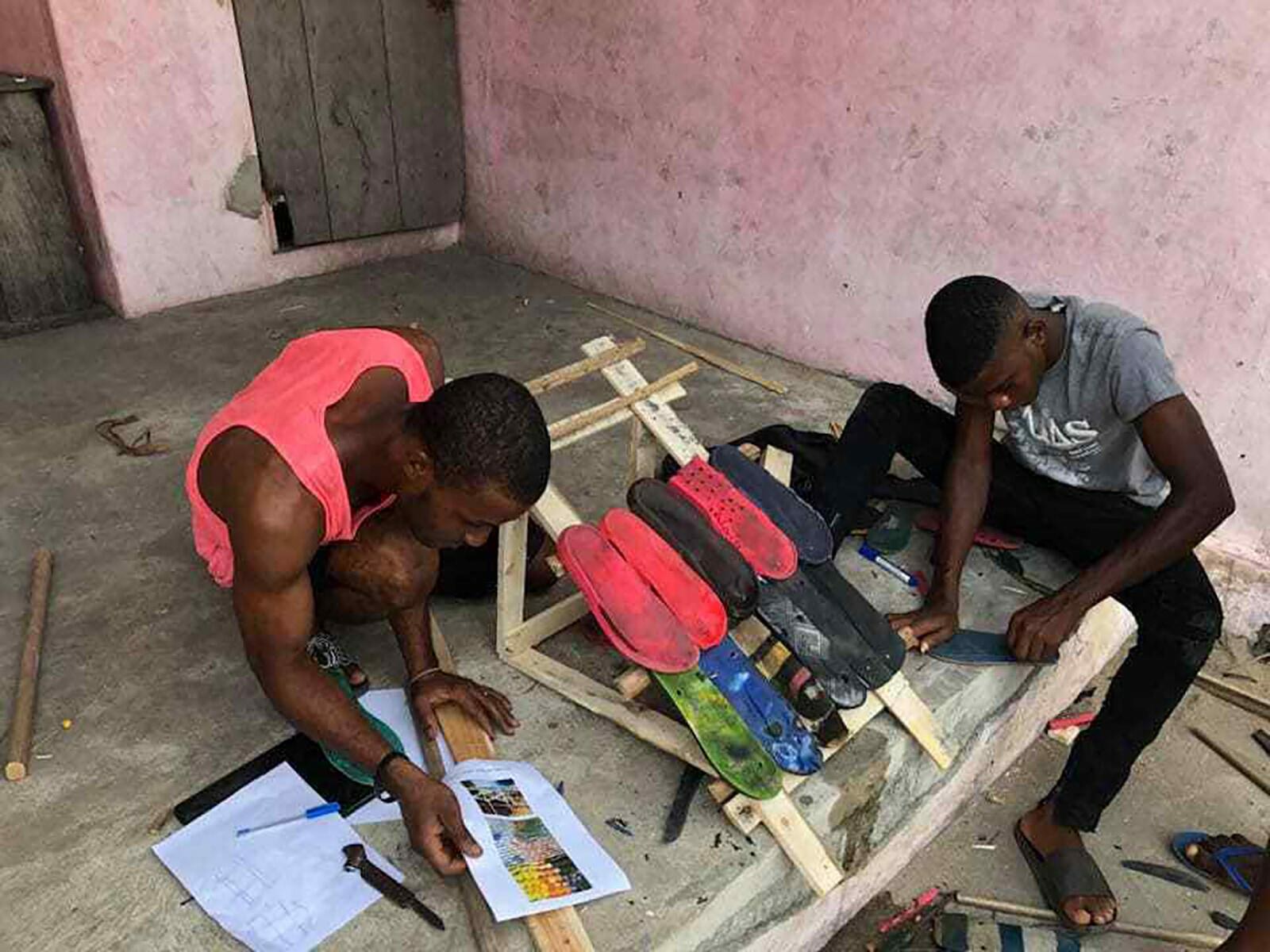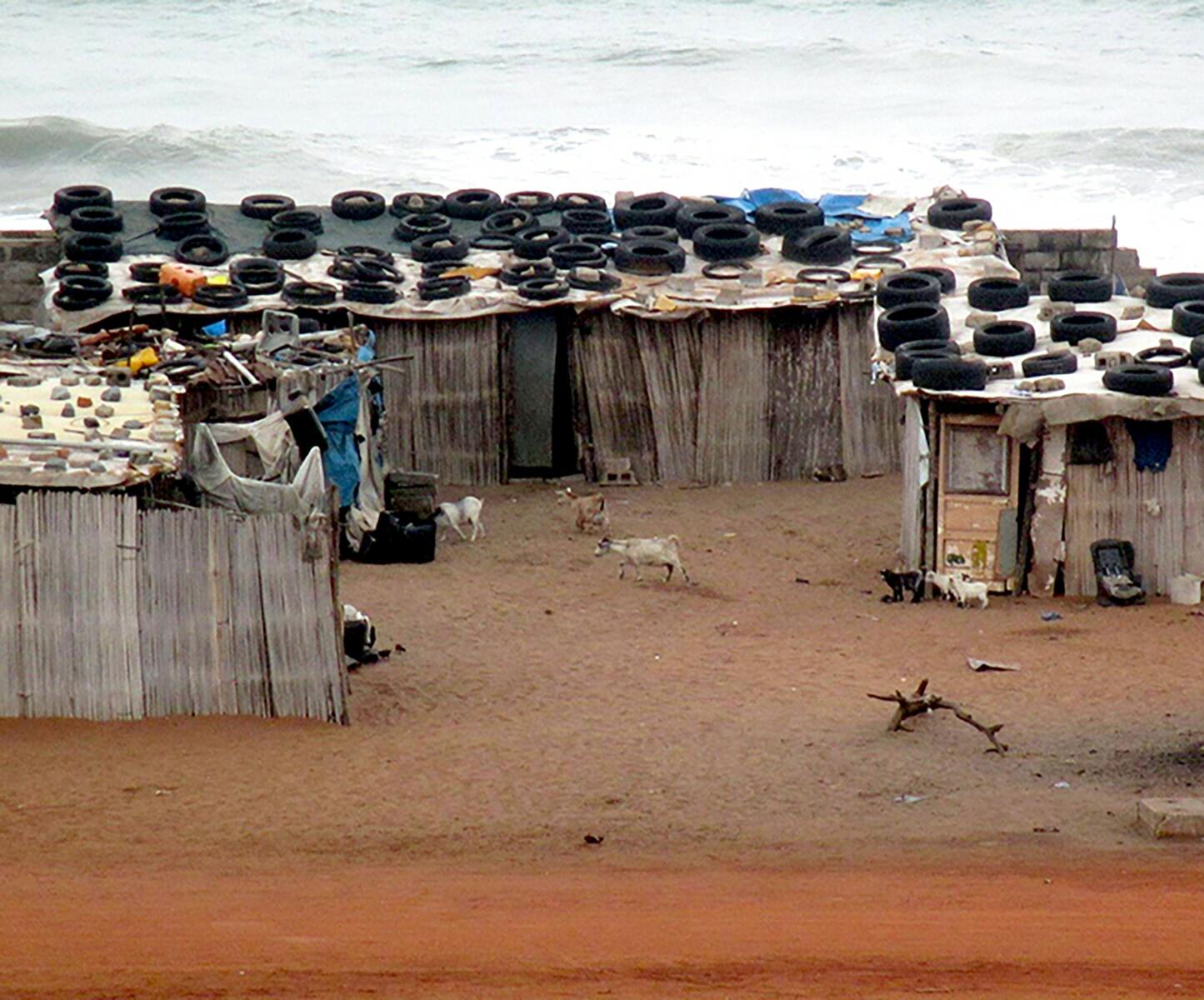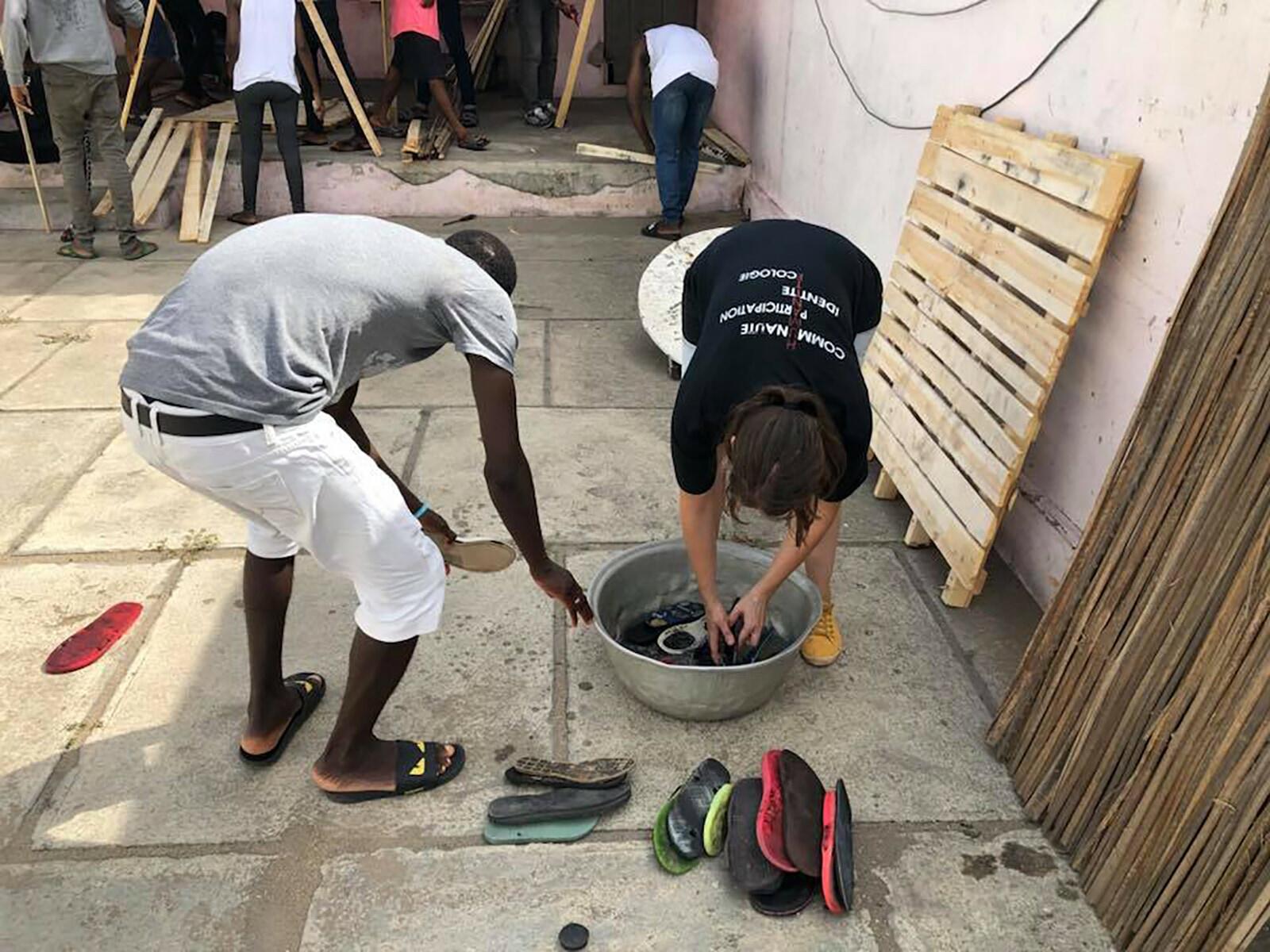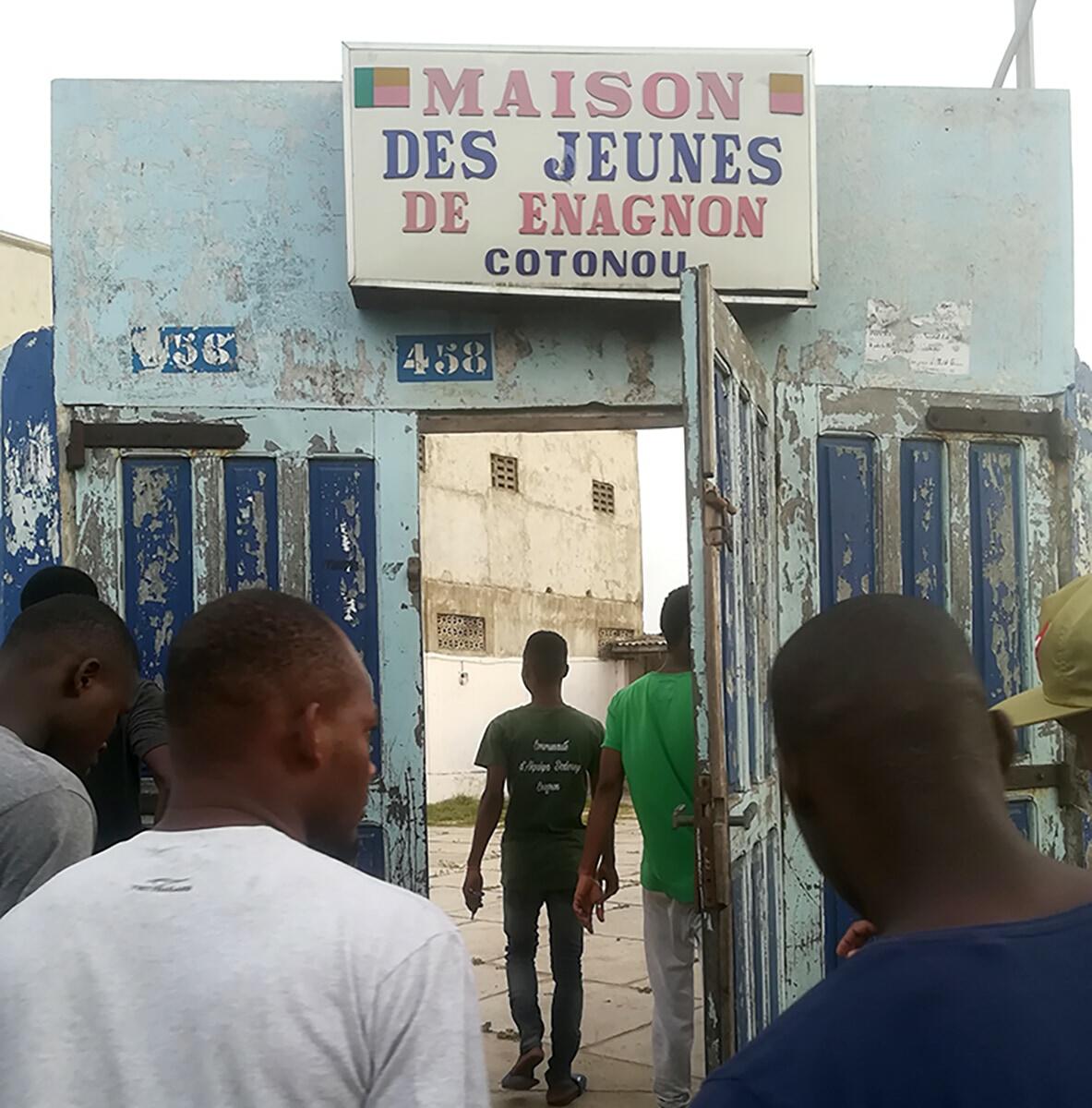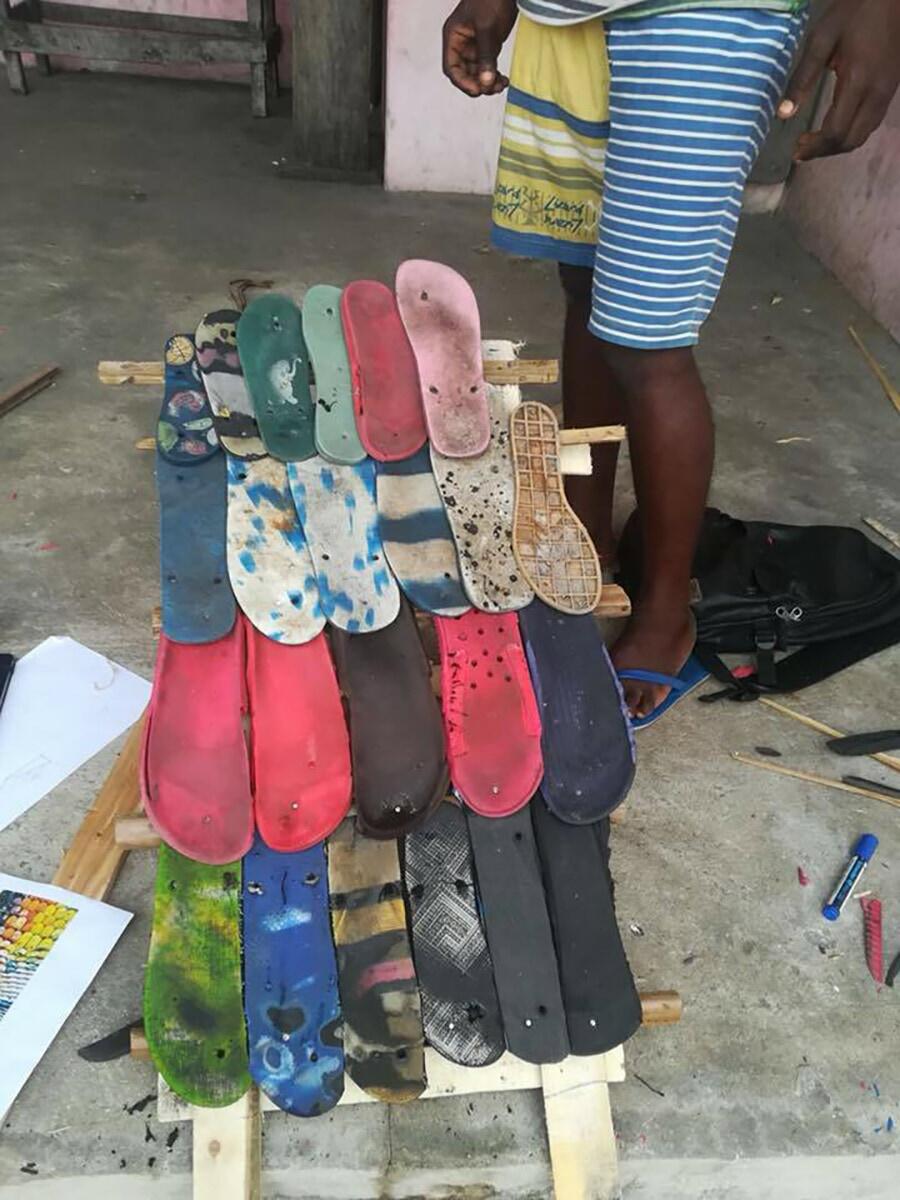Design endogène
It was during a year of immersion in African maker communities that she became interested in the low-tech production of local materials and became passionate about design pedagogy on the continent, between expert and lay knowledge (Manzini, 2015). Between 2018 and 2020, she took on the challenge of creating and directing the first design school in the West African region, Africa Design School in Benin. In parallel, from 2018, she joined as a volunteer the team of the NGO L’Atelier des Griots, a group of architects, designers and urbanists based in Cotonou. Co-founded in 2014 by Habib Mémé and John Stephen Ellis, this international studio is dedicated to the study and valorisation of local African building cultures, described as informal urbanism. Self-built dwellings in neglected peripheral neighbourhoods, which occupy 70% of African cities and are home to 199.5 million people on the continent (UN Habitat, 2014). However, it is in the face of adversity that creativity emerges, and this informal urbanism appears today as a true source of inspiration, due to its resilience. Akpakpa Dodomey Enagnon, a district of Cotonou neglected by the authorities and plagued by serious social problems (banditry, high unemployment, poverty), is the first site of intervention for L’Atelier des Griots. The objective is to support the empowerment of the population through the revitalisation of their public spaces, thus enabling them to fully exploit their social, economic and cultural potential. To do this, the Atelier des Griots relies on co-creation with the beneficiary local communities, based on strong ecological values, vectors of sustainable development that resonate today more than ever as a necessity.
In a context of strong globalisation, the quest for the “Afrotopos” (Sarr, 2016), or the question of the reappropriation of African identity by Africans, inexorably questions the practices of co-creation and empowerment of the designer from an intercultural perspective, via a demand for African integration (Ki-Zerbo, 2013), i.e. the valorisation of African knowledge and cultures at the base. In the African oral tradition, the griot – from a family line of griots – is a kind of storyteller, almost a historian, a mediator who embodies the memory of the family, the village, the country. For the Atelier des Griots, these stories are essential in order to respect the identity of the neighbourhood, to embody the way of life of its inhabitants through the project and to perpetuate a tradition through different mediums such as architecture, art, urbanism and design.
With the Griots, Caroline Grellier initiates a research field around her novel concept of endogenous design in order to question a methodological parallel between the tools of social innovation through design and the mobilisation of endogenous knowledge (Hountondji, 1994), leading to an endogenous development (Ki-Zerbo, 2013) of the territory. The aim is to shed new semantic light on an intercultural design approach generating social innovation in a logic of local development, in an African context. Among other projects, a series of workshops were conducted to improve self-building practices using local materials.
As a foreign designer of the country and the neighbourhood of Akpakpa Dodomey Enagnon, the first thing to do was to walk with the Griots through the neighbourhood, observe its tectonics, get to know its inhabitants by entering the courtyards of the houses, feel the life (Vauthrin, 1989) and identify the available resources. During a second workshop, a collection of materials on the ground, in the street as well as on the beach, enabled the Griots to create the material library of Akpakpa Dodomey Enagnon, and then to imagine the potential of these materials by planning other uses. The sole of a flip-flop, used for walking because it is resistant and waterproof, was thus explored as a roofing material, thanks to rudimentary DIY equipment. This solution, among others prototyped, is destined to change scale in order to integrate the great construction project of the Maison du Peuple (currently a neglected public courtyard). Entirely co-designed with the inhabitants of the neighbourhood, this building will provide access to a space for artistic expression, a library, an above-ground vegetable garden and a multi-purpose meeting space.
